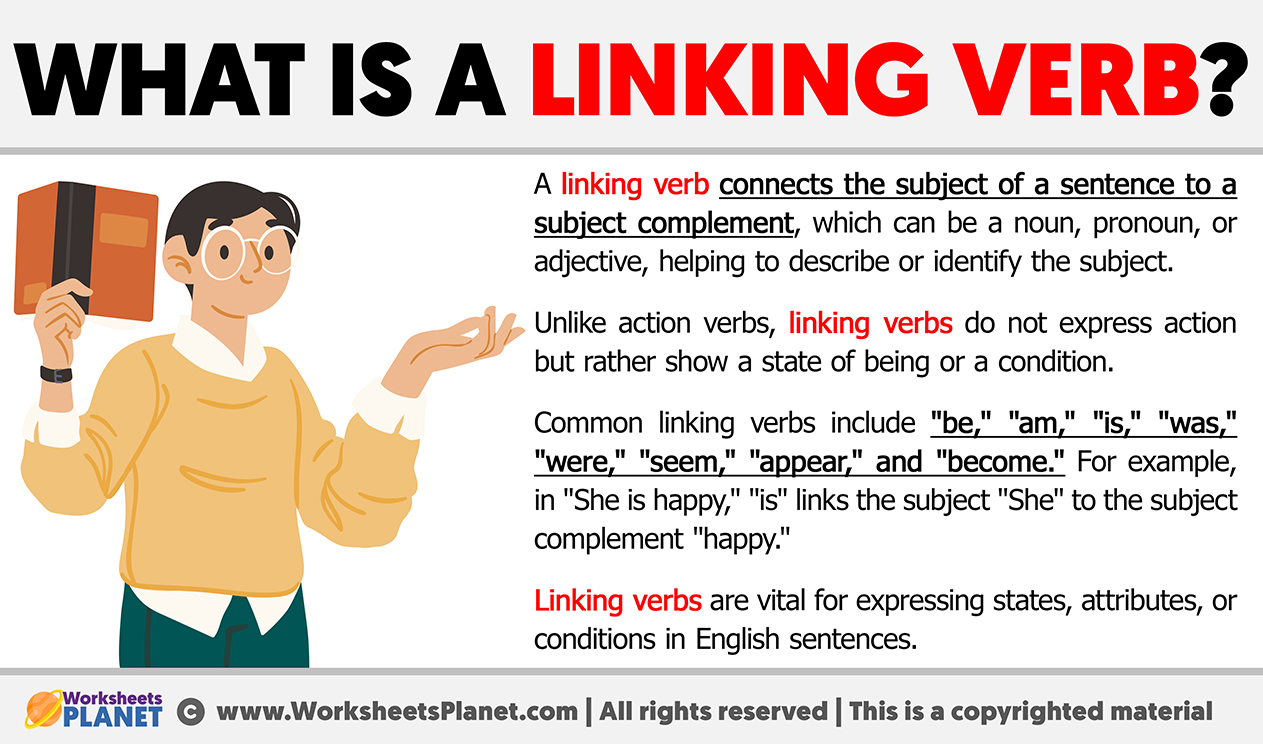A linking verb connects the subject of a sentence to a subject complement, which can be a noun, pronoun, or adjective, helping to describe or identify the subject.

Unlike action verbs, linking verbs do not express action but rather show a state of being or a condition.
Common linking verbs include “be,” “am,” “is,” “was,” “were,” “seem,” “appear,” and “become.”
For example, in “She is happy,” “is” links the subject “She” to the subject complement “happy.”
Linking verbs are vital for expressing states, attributes, or conditions in English sentences.

